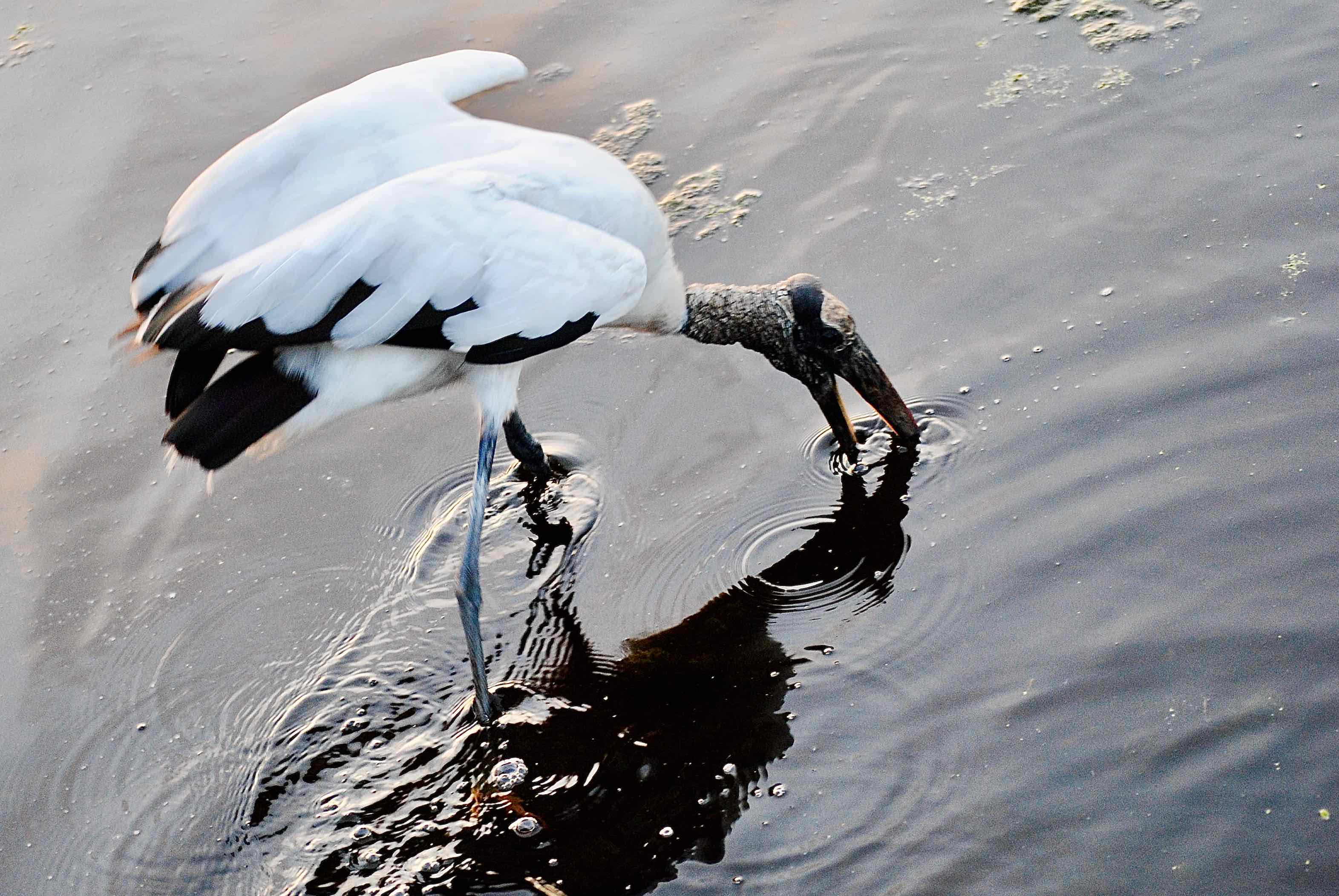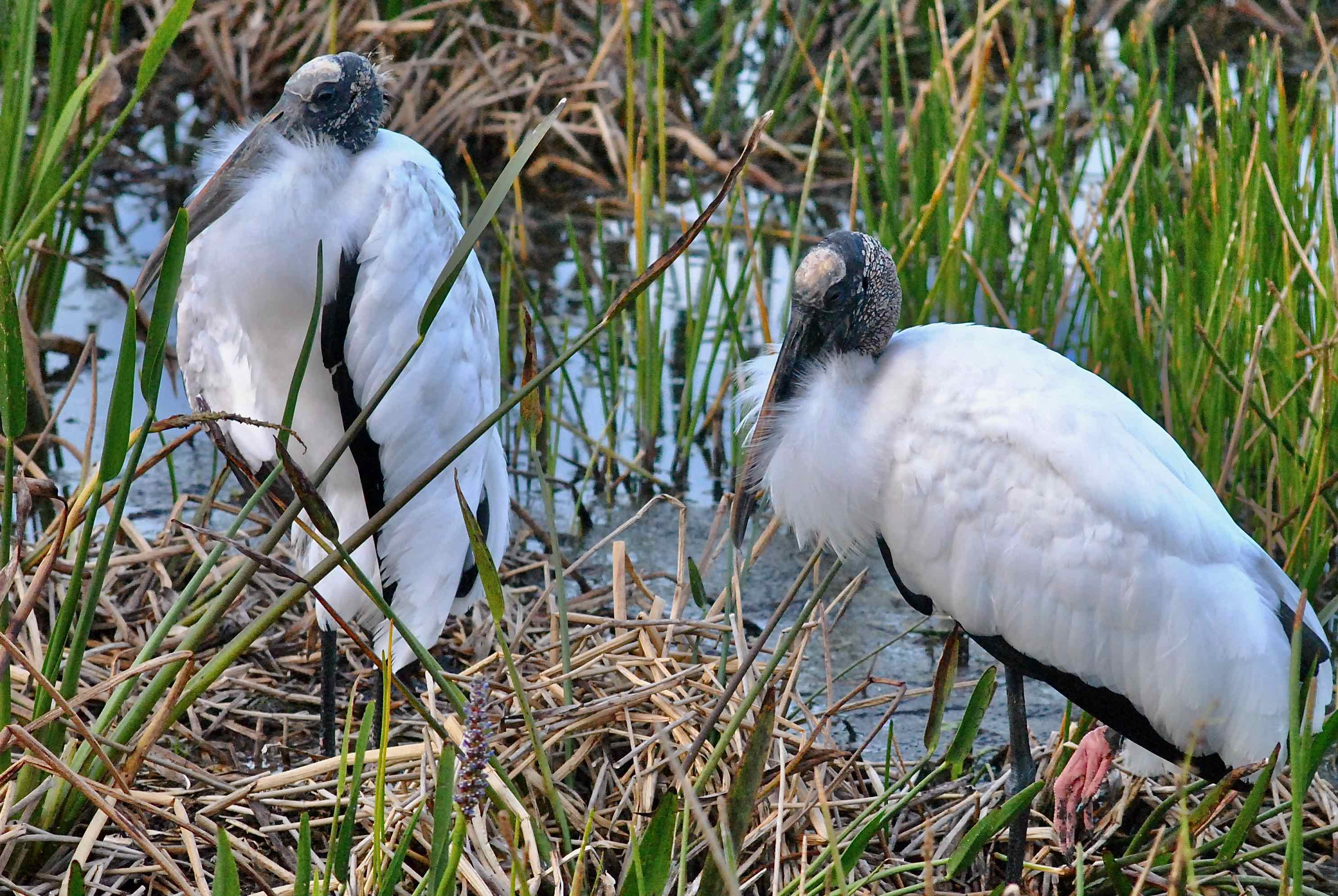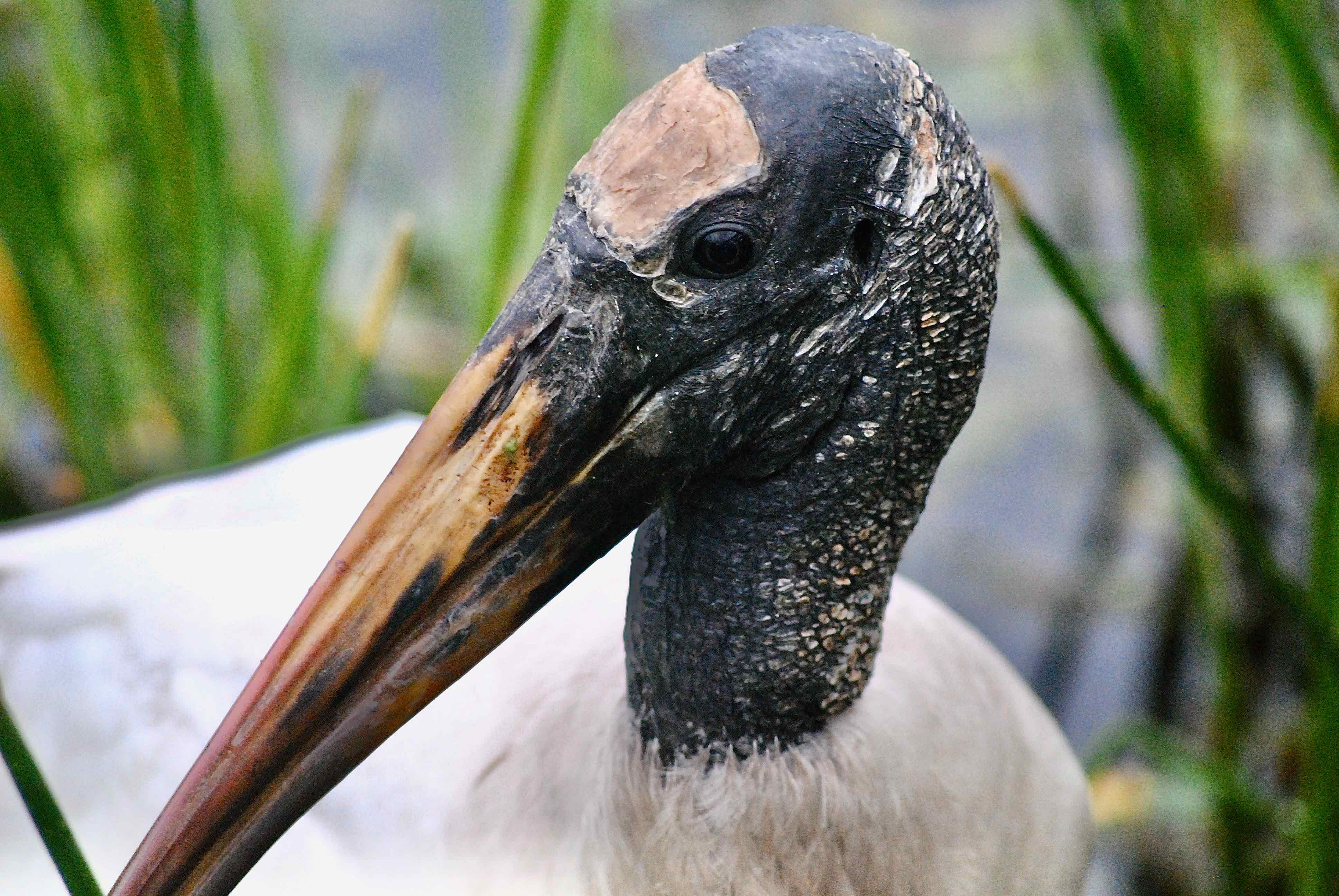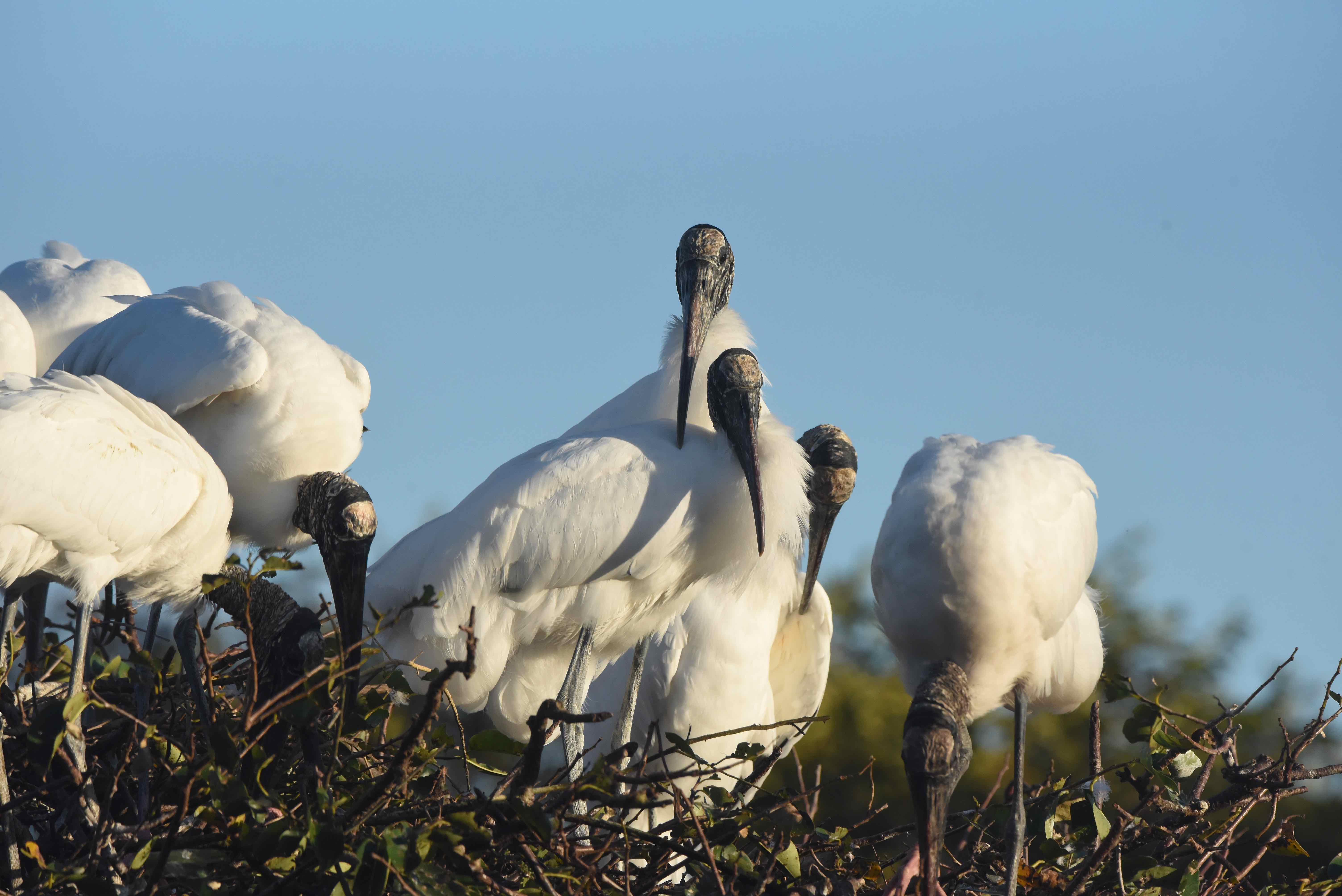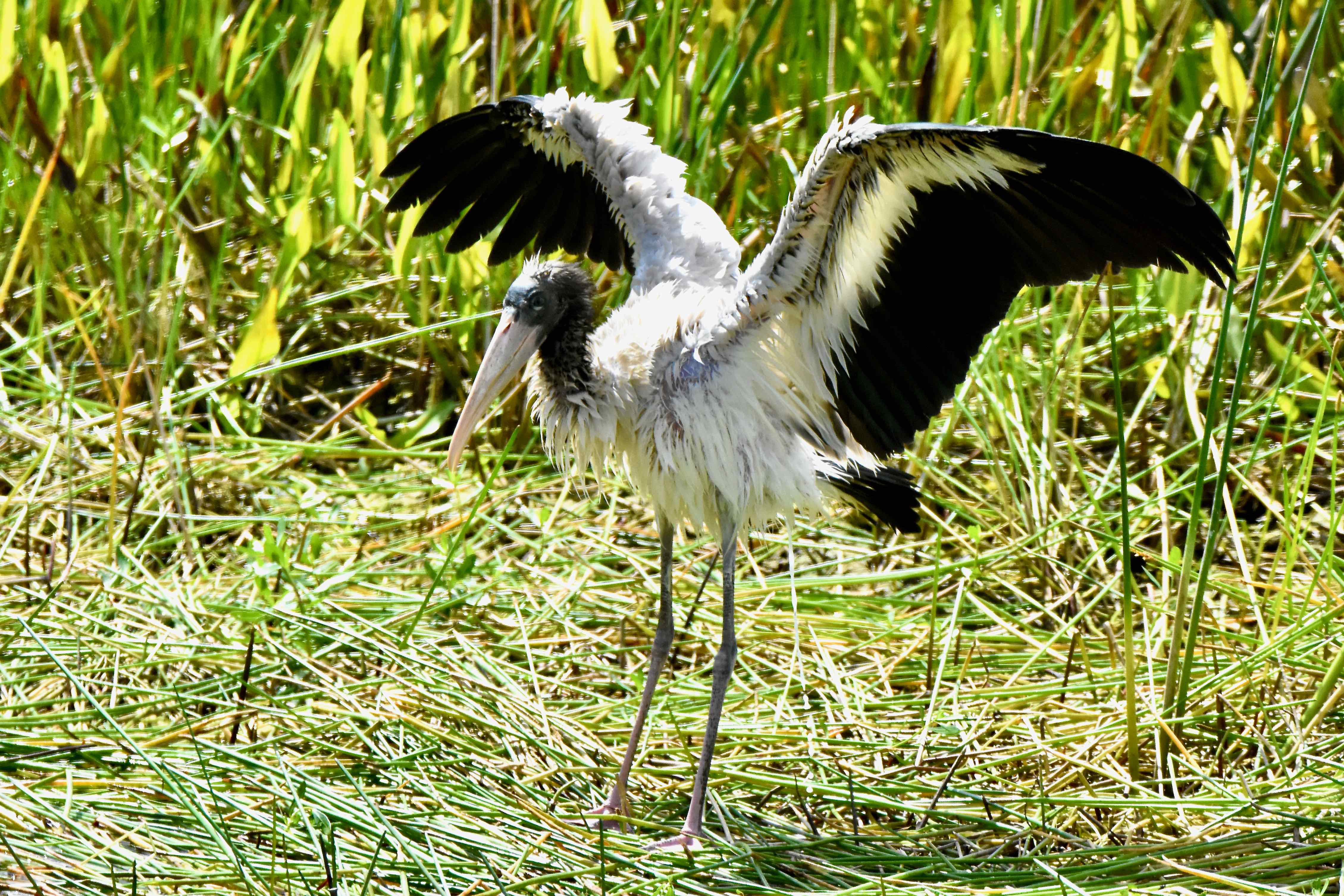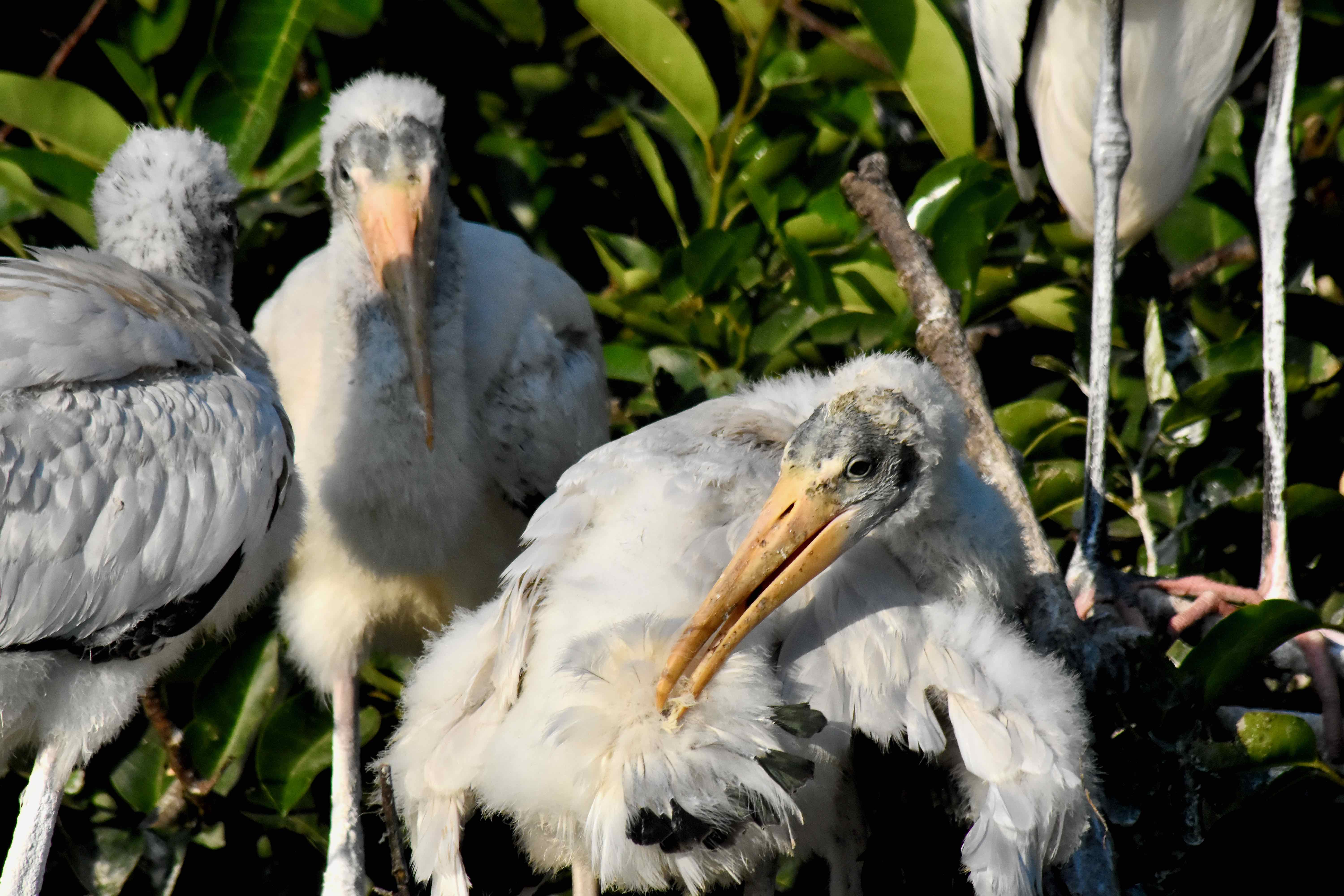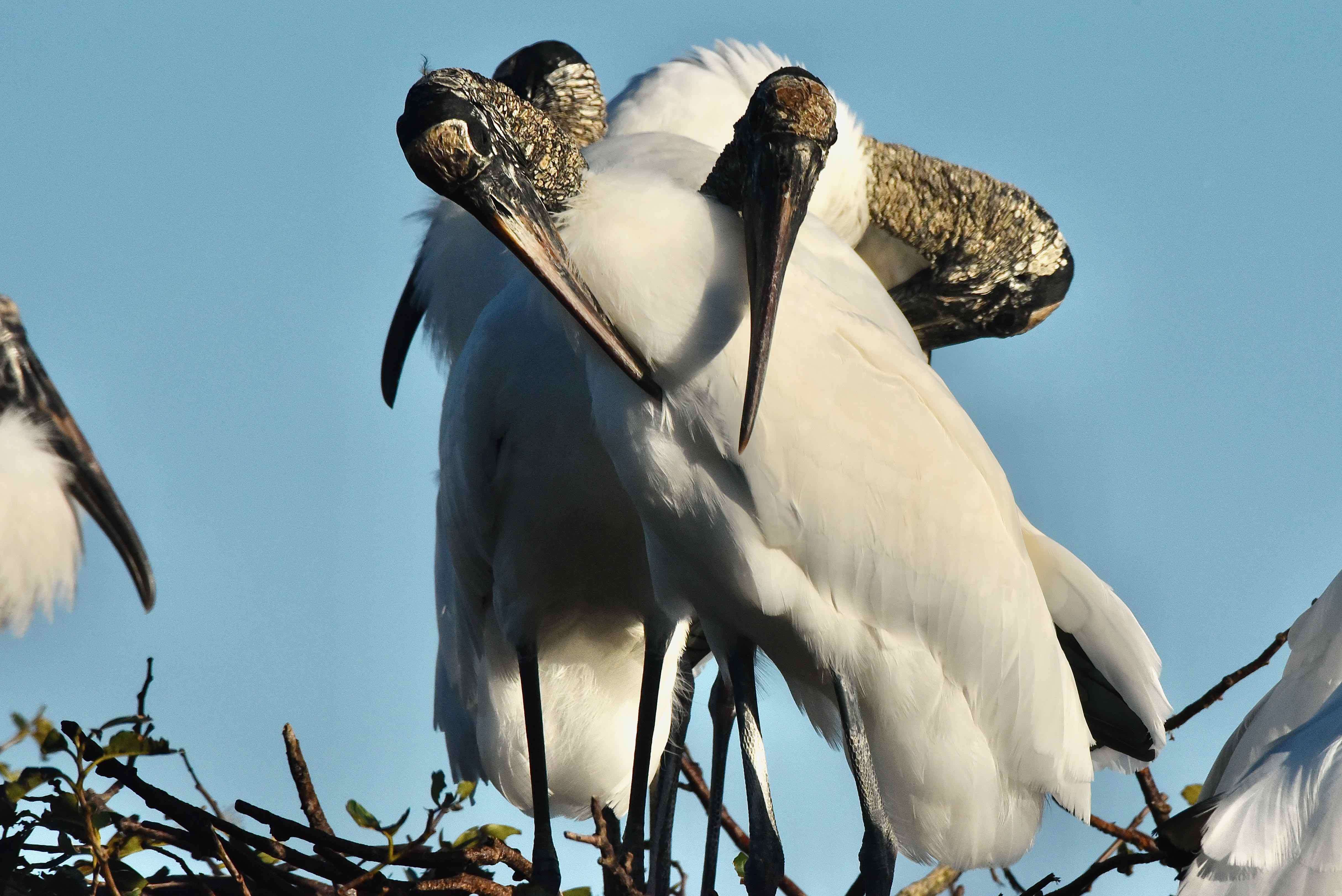
Wood storks, photographed at Wakodahatchee Wetlands, Delray Beach, Palm Beach County, in January 2020.
To be kind, the wood stork, Mycteria americana, has a face that only another wood stork could love. But when a woody takes to the air, well, that’s another matter altogether.
Graceful and spectacular are words that come to mind, a sight in our eyes rivaled only by a roseate spoonbill in flight.
It has become a fairly common bird in South Florida’s wetlands in the last few decades, in part because of conservation efforts that protected habitats and created new ones, like Wakodahatchee Wetlands in Delray Beach, where there is a substantial nesting colony. It’s not unusual to see one probing the water in a circular manner as if it’s drilling for something. You’ll see them alone or in pairs, or in dozens, wading in shallow waters.
Wood storks will winter as far north as coastal areas of the Carolinas, but they are year-round residents here in South Florida. In fact, they time their breeding to Florida’s dry season, when fish are more concentrated in pools. Their range extends southward to Uraguay and Argentina.
Wood stork numbers declined throughout most of the 20th century, earning the bird a spot on the federal endangered species list. But it’s done well enough in recent years that the U.S. Fish and Wildlife Service is considering moving it up a notch to "threatened.”
Globally, however, the wood stork population seems to be secure. The International Union for Conservation of Nature has it at “least concern.”
Woodies are among the largest birds in South Florida, with a body 45 inches long or more, and a wingspan that approaches 6 feet. Wood storks are mostly white, with a short black tail and black in the wings that becomes most apparent when the bird is in flight. The head is bald, the bill huge and curved. All of this makes the wood stork easy to identify. The only birds similar are the white ibis, which is much smaller, and the great egret, which is pure white and has a straight, orange bill.
Fish and aquatic invertebrates make up their diet. Wood storks forage in shallow water, head down, bill in water looking and probing for food — a technique called grope feeding or tacto location.
Once a woody feels potential a meal, its bill snaps shut quickly. Actually that's an understatement. The reaction has been timed at 25 milliseconds, the quickest of any vertebrate. It has to be quick: it has been estimated that a nesting pair of storks and their offspring will consume 443 pounds of fish during breeding season.
Woodies breed in large colonies in cypress trees, mangroves or pond apple trees. Clutches are two to four eggs, which take about a month to incubate. Both parents sit; both feed their offspring. For the first five weeks or so, one parent is always on the nest guarding against nonbreeding storks, which might kill the offspring. First flight comes at eight weeks; fledgelings return to the nest until about 11 weeks.
According to the U.S. Fish and Wildlife Service, woodies numbered 20,000 pairs in the 1930s. That number dropped to 10,000 by 1960 and 5,000 by the late 1970s. The reason can be summed up in a word: hydrology. Storks depend on the wet/dry seasonal cycles that naturally occur in Florida in order to breed. They also require wet habitats. South Florida's screwed up plumbing, the system of canals, levees and floodgates that diverted water that naturally flowed south through the Evergaldes into Florida Bay and pushed it east and west into the Gulf and Atlantic instead, has disrupted the natural seasonal cycles and destroyed habitat critical to wood storks and other animals.
Wood storks are one of 19 members of Ciconiidae, the family of storks, and the only member found in the U.S.

